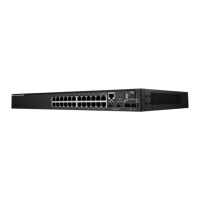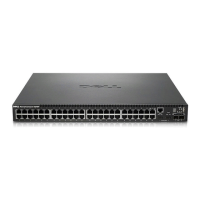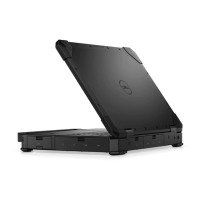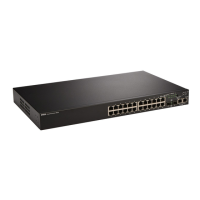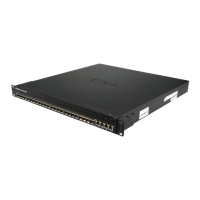Dell PowerConnect 55xx Systems User Guide 395
FILE LOCATION: C:\Users\gina\Desktop\Checkout_new\Maintenance Projects\Dell
Contax\CxUGSwitching_Ports.fm
DELL CONFIDENTIAL – PRELIMINARY 9/11/12 - FOR PROOF ONLY
Protected Ports
Protected Port Overview
Protected ports provide Layer 2 isolation between interfaces (Ethernet ports
and LAGs) that share the same Broadcast domain (VLAN) with other
interfaces. This can be used to set up a group of ports that receive similar
services.
A protected port does not forward traffic (Unicast, Multicast, or Broadcast) to
any other protected port on the same switch.
A community is a group of protected ports. Protected ports within the same
community can forward traffic to each other.
The following types of ports can be defined:
•
Protected Port
— Can send traffic only to uplink ports.
•
Community Port
— A protected port that is associated with a community.
It can send traffic to other protected ports in the same community and to
uplink ports.
•
Uplink Port
— An uplink port is an unprotected port that can send traffic
to any port.
•
Isolated Port
—
A protected port that does not belong to a community
.
Port Protection is independent of all other features and configuration
settings. Two protected ports in a common VLAN cannot communicate with
each other.
Protected Port Restrictions
The following restrictions apply to protected ports:
• When a protected port is placed in a LAG, it loses its protected port
attribute and takes upon itself the LAG's protection attributes. When the
port is removed from the LAG, its attributes are re-applied.
• Mirrored traffic is not subject to protected ports rules.
• Routing is not affected by the protected port forwarding rule, so that if a
packet enters a protected port, it can be routed by the device to another
protected port.
